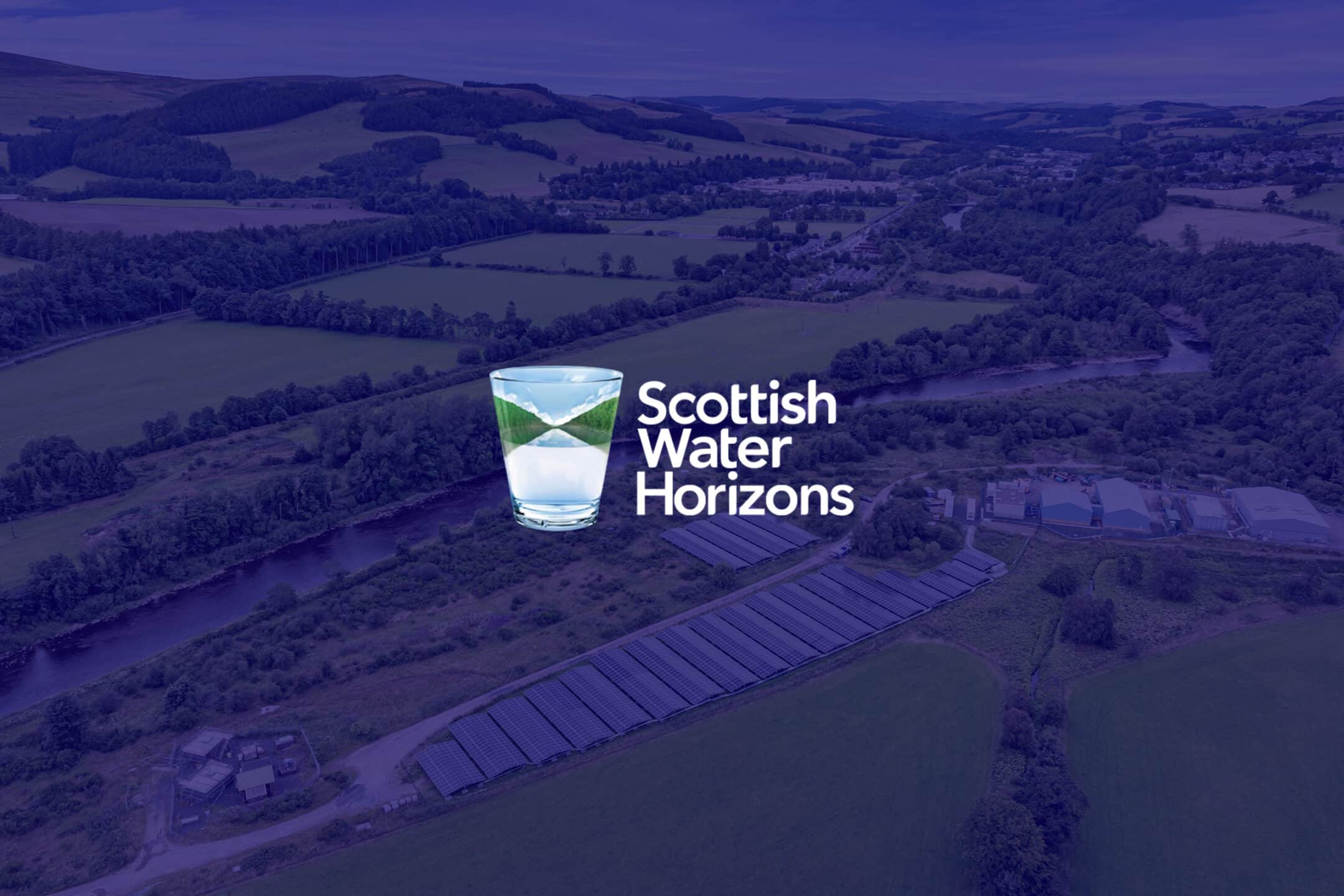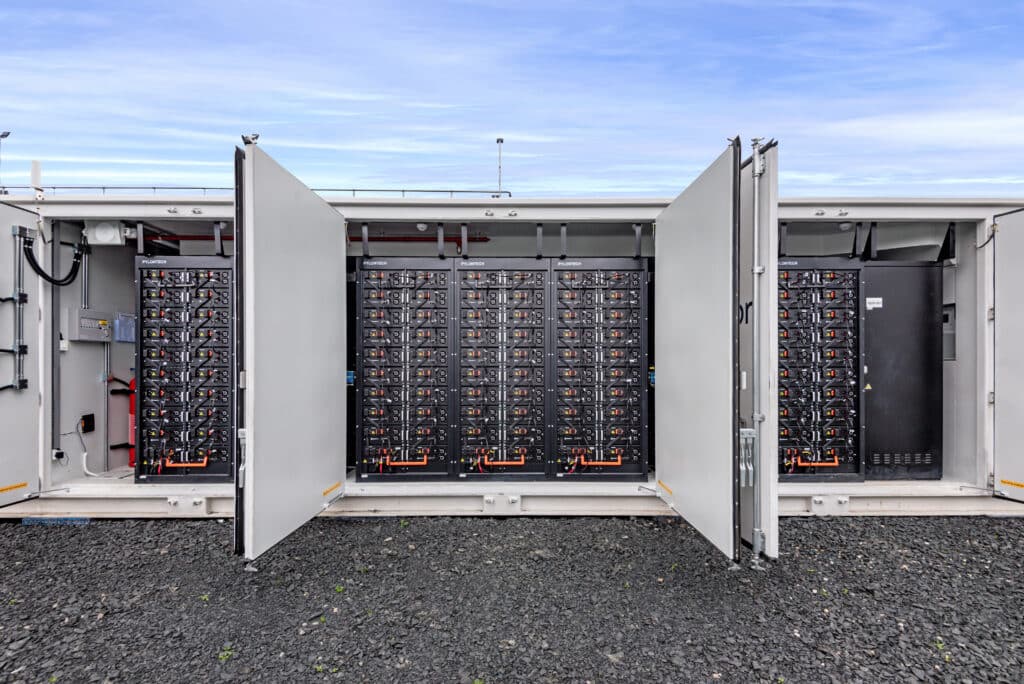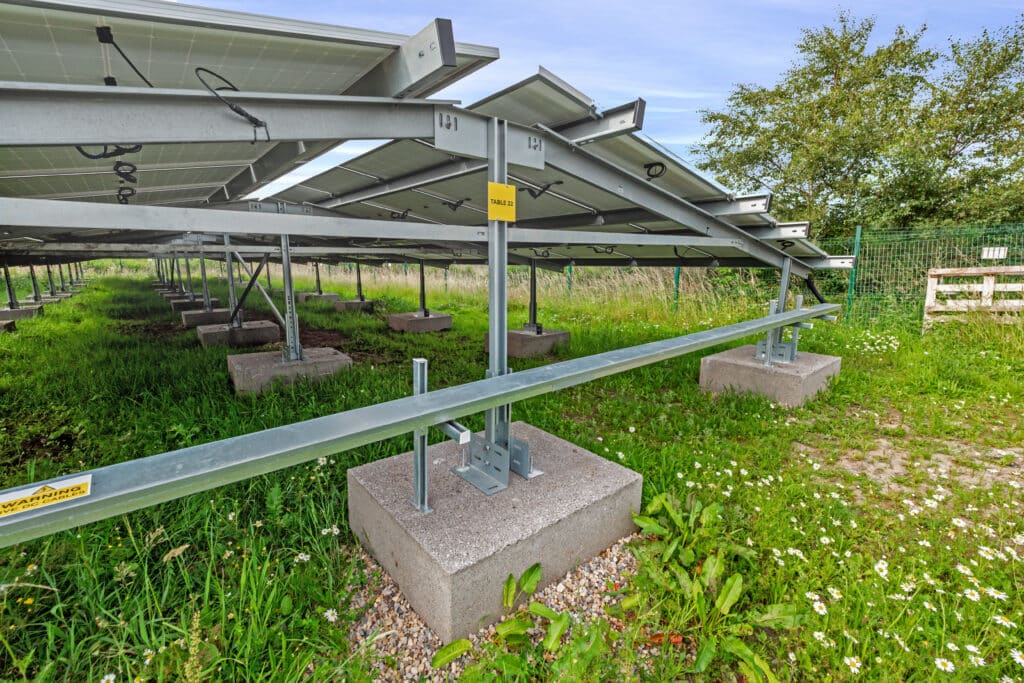| End User | Scottish Water Horizons |
|---|---|
| Industry | Water treatment facilities |
| Location | Selkirk, UK |
| Assets on site | Solar PV / Wattstor BESS / Podium EMS |
| Solar power | 1100kW |
| Battery (BESS) | 200kW / 1,600 kWh |
Find out how Scottish Water Horizons overcame grid constraints and accelerated its net zero journey with our DC-coupled BESS solution.
Scottish Water Horizons is a commercial subsidiary of Scottish Water operating as a standalone, sustainable business.
It has a large focus on sustainable development. This includes renewable energy generation, food waste recycling, and sustainable water and wastewater infrastructure projects.
Delivering water and wastewater services makes Scottish Water the single largest user of electricity in Scotland. To offset that, the utility has set ambitious decarbonisation plans. It aims to reach net zero by 2040, five years ahead of the Scottish Government’s target. As an interim step, it plans to deliver an extra 90GWh of new renewable generation by 2030. That equals the annual electricity use of more than 24,000 homes.
As part of the larger Scottish Water group, Scottish Water Horizons plays a crucial role in helping the utility reach its carbon reduction goals. Over the last decade, it has installed solar PV, wind, biomass boilers, and anaerobic digestion. These technologies help offset energy use and reduce CO2 emissions. At its Howden site, it also has a large ground area. This land has enormous potential for renewable energy generation.
The challenge: overcoming grid constraints and maximising land use
To achieve its decarbonisation objectives, Scottish Water Horizons plans to install more low-carbon energy projects at scale, including solar PV coupled with battery energy storage systems (BESS). However, grid constraints and net capacity issues in Scotland are severely holding its plans back, threatening the success of the decarbonisation programme.
In fact, its Distribution Network Operator, Scottish Power Energy Networks, limited Scottish Water Horizons’ onsite generation and export to 200kW due to restricted capacity on its networks.
With grid constraints jeopardising its decarbonisation efforts, Scottish Water Horizons needed a viable solution. It wanted to make the most of its available land and install enough renewable generation assets to cover a large share of the energy demand at its site in Howden, near Selkirk.
To do that, they utilised Wattstor in partnership with Emtec Energy as designer and installer, to benefit from our DC-coupled BESS solution in order to overcome grid constraints and get closer to their renewable generation targets.
Goals:
- Overcome grid constraints (200kW)
- Maximise land use
- Move closer to the target of generating an extra 90GWh by 2030 – and reach carbon neutrality by 2040
Our approach: DC-coupled BESS and a powerful EMS
As a first necessary step, we created a bespoke project design to maximise available space and install as much solar capacity as possible.
Emtec installed 2,112 ground-mounted solar panels and optimisers for a total of 1.1MW. The solar PV system was then paired with a 200kW/1.6MWh BESS
To help Scottish Water Horizons overcome grid constraints, we used Wattstor’s flagship DC-coupled BESS technology. This means the solar panels send DC electricity directly to the BESS system via optimisers, and then out to the site via a single AC inverter.
With this solution, Scottish Water Horizons could install as much solar PV as they wished direct to the battery, while still maintaining the 200kW AC grid connection.
How does DC coupling help overcome grid constraints? Find out more.
To optimise the entire energy system and make sure every component runs as efficiently as possible, we also integrated our powerful AI-based energy management system (EMS), Podium.
Podium is designed to manage an entire energy ecosystem. It ensures the system runs as efficiently and cost-effectively as possible, without human intervention. Using AI, Podium analyses current and future electricity market data, a site’s electricity usage, and the onsite generation and storage capacity. It then automatically manages all assets to minimise costs and maximise efficiency and cost savings.
Finally, to protect the surrounding site and community, the system was fitted with safety measures based on the latest industry best practices. These include remote fault detection, automatic shutdown systems, and battery fire suppression.
Process:
- Bespoke system design
- Installation of 1.1MW of solar PV
- Installation of a 200kW/1.6MWh DC-coupled BESS
- Podium integration
- Safety measures – fault detection, automatic shutdown systems, and battery fire suppression
Results: Five times more solar
Using Wattstor’s DC solution, Scottish Water Horizons installed five times more renewable generation assets. This would not have been possible under their normal grid limit.
This boosted its generation capacity to 1.2 megawatts, covering over 30% of the site’s power demand. Moreover, with battery storage, it can maximise the use of energy generated onsite.
“Thanks to the inclusion of the batteries, we have been able to maximise the potential of the site to generate renewable energy,”
The project is also massively contributing to Scottish Water’s sustainability agenda by saving 169 tonnes of carbon emissions annually.
“Thanks to the inclusion of the batteries, we have been able to maximise the potential of the site to generate renewable energy,” said Alan Mearns, Scottish Water Horizons Project Manager. “The size of the land meant we could install a large number of solar panels. The batteries would then allow us to store and use more of the electricity , rather than having to export it to the grid.”
Mr Mearns also highlighted the importance of the system’s optimisation through Podium AI, thanks to its ability to automatically monitor the wholesale energy market and make smart decisions accordingly:
“As the scheme is remotely monitored, at the time of year when there’s not a lot of sunshine, it allows us to import from the grid at a lower rate to charge the batteries and then feed it back into the works during the times when it costs more, helping to reduce operational costs.”
Finally, the grid connection opens up the opportunity for future energy trading in the wholesale market. This allows SW to maximise the project’s ROI by exporting excess solar energy at the best possible time to increase revenues.
“We’re proud of Wattstor’s involvement in this project,” commented Wattstor’s CCO Kevin Ball. “The water and wastewater industry is on a tight deadline to reduce its carbon emissions. Regulators as well as the public are closely scrutinising the sector to ensure progress is made. It’s great to be able to offer concrete solutions that help water companies overcome their sustainability challenges.”
Outcome:
- 1.2 megawatts of renewable energy generated
- 169 tonnes of carbon saved annually
- +30% of the site’s power demand is met
- 100% of the renewable energy generated is used
- Possibility to export excess energy to the grid
Would you like some support to overcome grid constraints, meet your carbon reduction targets and slash your electricity bills? Our expert team can help! Get in touch today for a free consultation.
1.2 MW
renewable energy generated
169
tonnes of carbon saved annually
Up next...
Boosting Sustainability & Energy Resilience for Exeter City Council
Contact us
If your commercial energy bills are too high but you have plenty of roof space, we could help you cut costs and carbon. Tell us more below
Contact us
If your commercial energy bills are too high but you have plenty of roof space, we could help you cut costs and carbon. Tell us more below
- +44 (0) 20 3868 5555
- [email protected]
- Wattstor Ltd, 21 Ironmonger Lane, London EC2V 8EY



